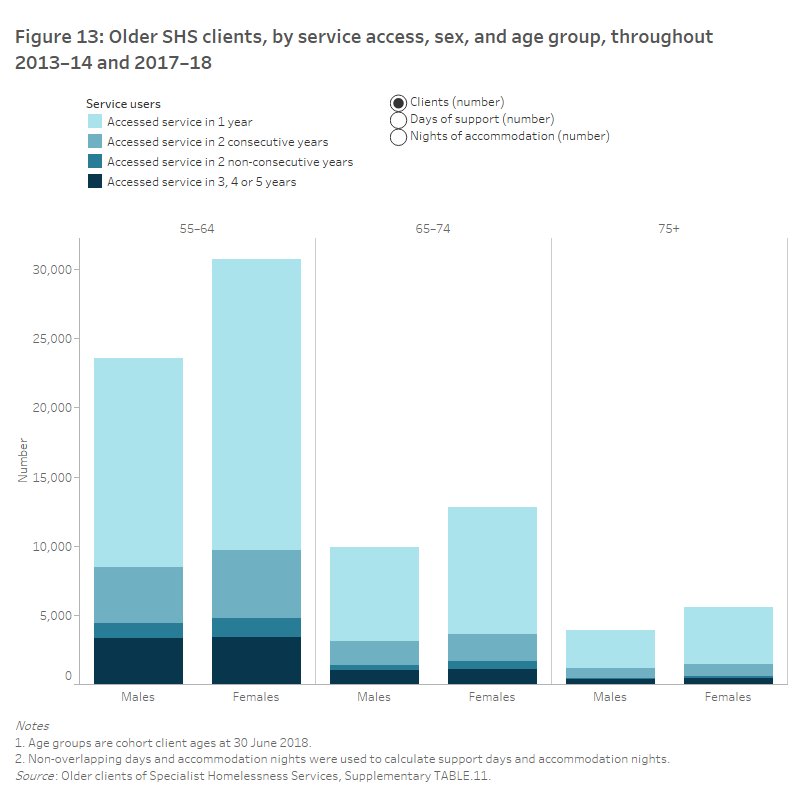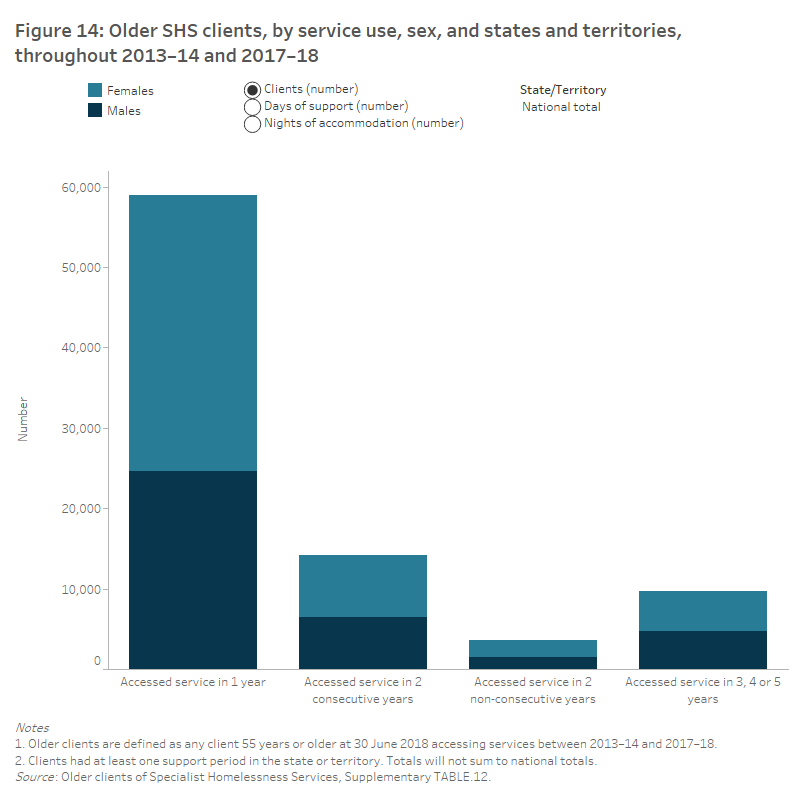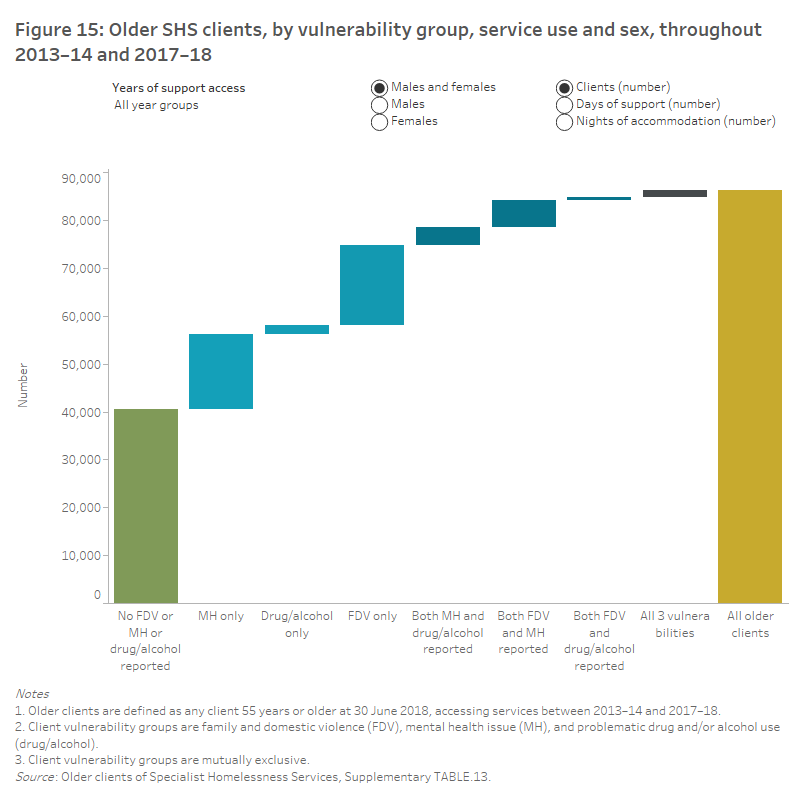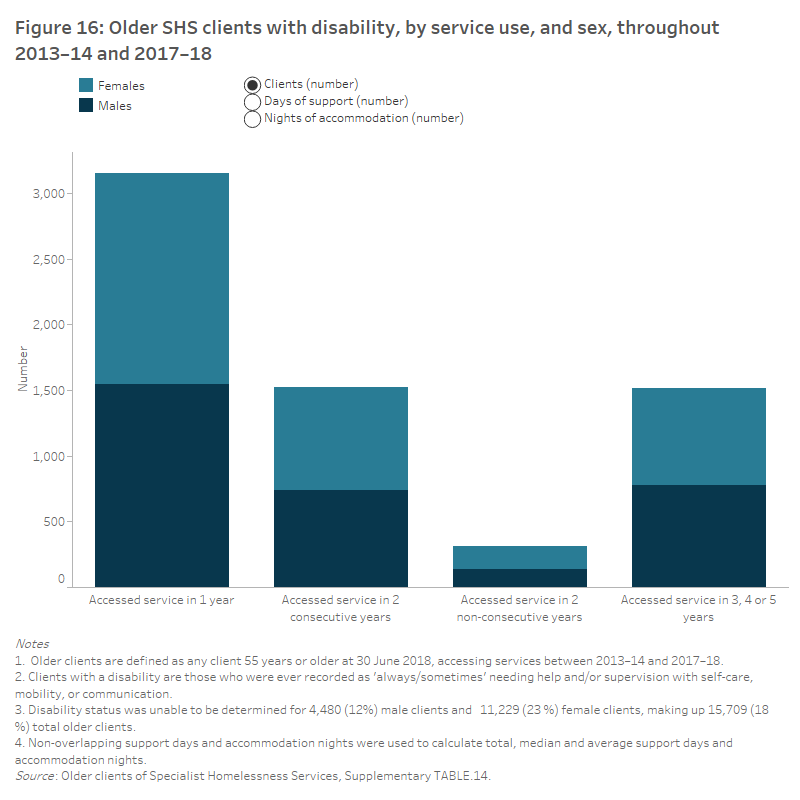All clients between 2013–14 to 2017–18
A total of 86,400 unique SHS clients aged 55 and older received at least one service during the total period 2013–14 to 2017–18 (Figure 13). Over 6 in 10 were aged 55–64 (54,300 or 63% clients); there were fewer clients aged 65–74 (22,700 or 26%) and aged 75 and over (9,500 or 11%) (Supplementary table 11). Note: the age of clients presented throughout this section are based on the client age as at 30 June 2018. Overall, the 86,400 SHS clients received a median of 28 days of support and an average of 24 nights of accommodation per client.
While there were more female SHS clients (49,100 or 57%) than male clients (37,300 or 43%) over this period, male clients were more intense service users (Figure 13). Older male SHS clients had a higher median number of days of support (34 days per client) compared with female clients (23 days). Also, males received over half (58%) of the total nights of accommodation provided to older SHS clients (Supplementary table 11).

Of the 86,400 older SHS clients accessing services during 2013–14 to 2017–18, the largest number accessed services in Victoria (43,100 clients) followed by New South Wales (18,100) (Figure 14). Clients in the Northern Territory had the highest average number of nights of accommodation (61 nights) and days of support (228 days) (Supplementary table 12).

Nearly half (47% or 40,600 clients) of older SHS clients receiving SHS support during 2013–14 to 2017–18 did not report a vulnerability (Figure 15). Almost 1 in 5 (19%) clients reported ever experiencing family and domestic violence only and a further 1 in 5 reported mental health issues only (18%). Few older SHS clients reported all 3 vulnerabilities (2%) (Supplementary table 13).
The vulnerability profiles differed among the service use groups. The proportion of clients reporting no vulnerability decreased with increasing years during which clients received services. That is, around half (52%) of those receiving support in a single year had no vulnerabilities, compared with 42% of those receiving support in 2 consecutive years, 37% of those in the 2 non-consecutive years group, and 27% of those in the 3, 4 or 5 years group.

Around 8% of the 86,400 older SHS clients who received services during 2013–14 and 2017–18 reported that they always or sometimes needed assistance with self–care, mobility and communication (Figure 16). A similar number of females (3,300 or 51%) and males (3,200 or 49%) received services (Supplementary table 14).



